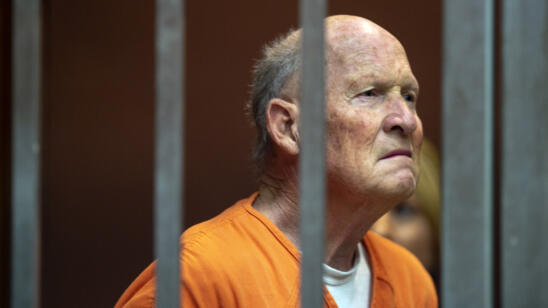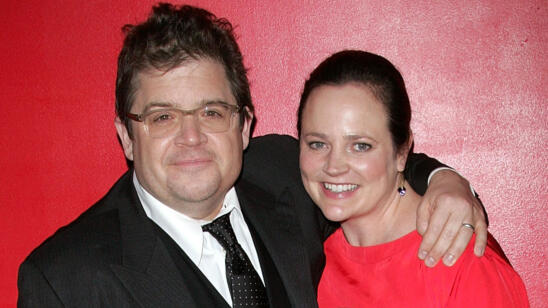Every decade has its iconic criminals: in the 1960s, it was Charlie Manson and the Manson Family; in the 1970s, it was Ted Bundy and John Wayne Gacy.
There’s been no shortage of violent crime this decade, either. As the 2010s come to a close, A&E True Crime looks back at the past 10 years—at some of the crime stories that drew the most public attention, and at the criminals the public will long remember. The list is by no means comprehensive, but covers a spectrum of deeply shocking deeds ranging from child homicide to domestic terrorism and more.
2011: Casey Anthony
It was Caylee Anthony’s grandmother, Cindy, who first called 9-1-1 to report the two-year-old missing. Less than five months later, the child’s remains were found on the family’s land.
Caylee’s mother, Casey Anthony, was immediately targeted as a potential suspect. For weeks, she’d lied about the missing girl’s whereabouts, and—according to Cindy—her car smelled like it had housed a decomposing body.
At her 2011 trial, prosecutors presented DNA evidence linking Caylee’s corpse to the car, as well as evidence from Casey’s computer that showed that the 22-year-old had done extensive Internet searches into making and using chloroform.
Despite that evidence, the jury acquitted Anthony of killing her child, convicting her only of the lesser charges of providing false information to law enforcement. She was released on time served, igniting public outrage.
“One of the things that attracts people to true crime is that it allows them to vicariously live out their most taboo fantasies,” says Schechter, the editor of True Crime: An American Anthology—a book that looks at some of the most memorable crimes in American history.
2012: Sandy Hook
Adam Lanza, a mentally deranged 20 year old, entered Sandy Hook Elementary School on the morning of December 12, 2012 with a Bushmaster semi-automatic rifle and hundreds of rounds of ammunition. He’d killed his mother, Nancy Lanza, earlier that morning.
Once inside, he began gunning down victims. By the time he’d turned the rifle on himself less than five minutes later, he’d taken 26 lives.
It’s not the number of fatalities that made the story so noteworthy, says Schechter. It’s that 20 of his victims were children, ages 6 and 7.
“Certain crimes activate these really infantile [feelings] that are still part of our adult psyches,” Schechter says. “With mass murderers, there’s a way that it turns us into children again…there’s a monster on the loose. Adam Lanza fits that.”
2013: The Boston Marathon Bombing
In Boston, Massachusetts, the marathon is usually a rite of spring. But on April 15, 2013, it became the setting for the city’s greatest act of terrorism. The Tsarnaev brothers, Tamerlan and Dzhokhar (26 and 19, respectively), exploded two pressure cookers near the race’s finish line, killing three people and injuring several others.
The brothers were Chechen refugees, motivated by radical Islamist beliefs.
In the days that followed, they shot and killed a police officer at the Massachusetts Institute of Technology, and carjacked a Mercedes. The car’s owner called 911, which led police to the brothers in the city suburbs, culminating in the story’s dramatic finish: a shootout, wherein older brother Tamerlan was killed; and a manhunt that ended with police hauling Dzhokhar, bleeding from multiple gunshot wounds, from a parked boat in a resident’s backyard. His pencil-written confession on the inside wall of the boat was partly obscured by blood drippings and bullet holes.
Dzhokhar was sentenced to death.
“There are elements that make it deeply compelling,” Schechter says. “Two perpetrators and their relationship. The terrorist motivations. The hunt for them…and what could be more straight out of some amazing thriller than the way the guy was caught?”
2013: The Arrest, Imprisonment and Suicide of Aaron Hernandez
Aaron Hernandez was burgeoning sports royalty, earning a $40 million contract from the New England Patriots at just 22 years of age. But then, just as suddenly, his career came to a halt.
Hernandez was arrested, indicted and convicted for the murder of Odin Lloyd, a semi-professional football player whose body was found in an industrial park near Hernandez’s home. The two men had known one another through Hernandez’s fiancée, whose sister was dating Lloyd. A concrete, understandable motive for the murder never became clear.
In April 2015, Hernandez was found guilty of murder in the first degree. In April 2017, he committed suicide by hanging himself with his prison-cell bed sheets. Since his death, his family and others have tried to shed light on the chronic traumatic encephalopathy (CTE) Hernandez incurred during his football career and the role it may have played during his crimes.
“It’s fascinating as a case, because he was such a celebrity and had so much to lose,” says Kevin Flynn, editor at The New York Times and of The New York Times Book of Crime. “You can’t imagine someone with so much to lose risking it all.”
2017: O.J. Simpson Released on Parole
Hernandez wasn’t the only former NFL player whose criminal case made waves in the 2010s. O.J. Simpson also re-emerged in the news.
As the defendant in the 1994 double murder of his ex-wife Nicole Brown Simpson and her friend Ron Goldman, Simpson had played the starring role in what was perhaps the most publicized murder trial in history.
But after being famously acquitted of that crime, Simpson once again fell afoul of the law when he was found guilty of armed robbery for sticking up a memorabilia dealer at the Palace Station Hotel in Las Vegas, for what he claimed was his own sports memorabilia.
In 2017, after serving nine years in prison, Simpson was released on parole.
2017: The Massacre in Las Vegas
It was the deadliest mass shooting in the history of the United States. Out on the Las Vegas Strip, 64-year-old Stephen Paddock, a local Nevadan and compulsive gambler, took out multiple hotel rooms on the 32nd floor of the Mandalay Bay Hotel. On October 1, 2017—after several nights of gambling—he used a series of mounted assault rifles to rain bullets indiscriminately upon thousands of concertgoers at an outdoor country music festival being held across the street.
In approximately 10 minutes, Paddock fired more than a thousand rounds of ammunition, killing 58 and wounding nearly 900 others. Still hundreds of others more were wounded in the ensuing panic.
Paddock killed himself; no clear motivation for his crimes ever emerged.
“So many other [mass shooting] cases are not random,” says Flynn. “They’re often people who come back: to their old school [for example]… In his case, the motivation for why he chose to do it seems to remains a mystery.”
2017: Police Track Down the Suspect in the Golden State Killer Cold Case
From 1974 to 1986, a serial killer terrorized California—first around Sacramento, then later in southern California. All told, at least 13 people were killed. Dozens more were raped and/or burglarized.
But the murders stopped and the case ran cold—until science caught up. By uploading crime-scene DNA into a public database, investigators were able to identify some of the alleged killer’s family tree, which in 2018 brought them to arrest Joseph DeAngelo, a 72-year-old retired police officer.
Flynn says it’s that forensic twist that made the story so compelling.
“The ability of science to reach back that far into the past and solve an enduring mystery is the thing that drew attention to that case,” Flynn says.
As of press time, DeAngelo is still awaiting trial.
2019: Samuel Little Confesses to Scores of Killings
Samuel Little was already in prison for three murders when he began telling Texas Ranger James Holland about others—many others.
Little, then 78 years old, said he’d killed more than 90 people over his long, itinerant life—most of them women, most of them via strangulation. Authorities around the country quickly confirmed dozens of them.
According to the FBI, Little is the most prolific known serial killer in American history. And yet many Americans still don’t know his name.
“I’m struck that Samuel Little doesn’t seem to be that well known,” Flynn says. “It’s possible that as time unwinds, we might find that [his] name rises.”
2019: The Angel of Death, Niels Högel
Samuel Little isn’t the only serial killer convicted of a mind-numbing quantity of murders this decade. In Germany, after the nurse Niels Högel was caught in the act of lethally injecting a 63-year-old patient with Ajmaline, a cardiovascular medicine. he soon confessed to several others. At trial he was convicted of murdering 85 patients, making him the most prolific serial killer in German history. Some estimate his true body count might be closer to 300.
“The number is astounding. And the one thing that’s scary about that is it’s such a vulnerable population,” says Flynn. “Any time you put patients in a healthcare setting, you expect there to be certain safeguards. When they don’t exist, it becomes terrifying.”
2019: The Arrest and Suicide of Jeffrey Epstein
He was a New York City hedge fund manager of enormous wealth and influence. He wined and dined with multiple presidents and British royalty; he owned his own private Caribbean island.
It was a societal position that seemed to put him above the law—in 2008, he avoided prison time for multiple counts of underage sexual abuse via a favorable (and since criticized) plea deal.
But in 2019, he was arrested on the suspicion of underage sex trafficking. This time, facing decades of potential prison time, Epstein died in his prison cell while awaiting trial. The cause of death—initially ruled suicide by his hanging—has been challenged by Epstein’s lawyers and has also been met with skepticism by the general public.
“The crimes that endure in the way we’re speaking about are usually sensational homicides,” says Schechter. “But the Epstein case is noteworthy because it reflects so much about the ‘Me Too’ moment.”
Some Other Major Crime Stories of the Decade
Chris Watts Murder Case: The Most Disturbing Revelations from the Prosecution’s Discovery Files
The Unsolved Delphi Murders: What Happened to Indiana Teens Libby German and Abby Williams?
The Turpin Family Child Abuse Case: Why Do Some Parents Torture Their Children?
Rhoden Family Murders: Was a Custody Battle the Reason Behind the Massacre?


